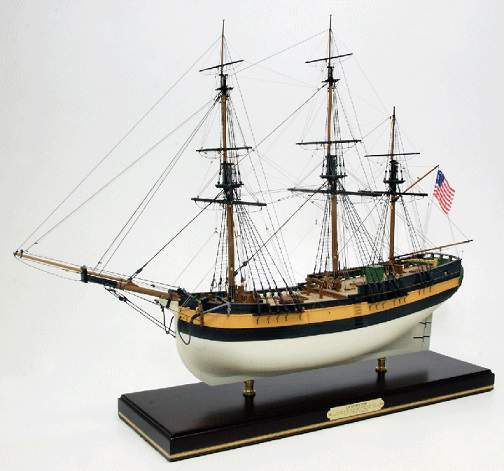Five Historical “Firsts” of New Bedford
In this series, I’d like to take a lighter approach to the history of the Whaling City. I come across a lot of really interesting historical facts and the vast majority of them do not merit an entire article. The problem is that they are just too interesting to not share. At least from the point of view of an historical nerd like myself. Or nerds like us, right? Guys? Hello? Why is there an echo in here? Is that a snore that I hear?
Well, I hope I’m not alone. I’m a hopeless optimist, so am going to chug ahead with my nerd train. I am going forward with the thought that there are people genuinely interested in the region’s history. Enthusiastic for it. Famished for it. I’ve had to be creative to come up with ways to compile the information that doesn’t seem forced or artificial. With that having been said, I offer you the first installment in a series that centers on firsts of New Bedford.
1. The First Ship Built: the “Dartmouth.” (1767)
The Dartmouth was the very first ship to be built in New Bedford in 1767 on a piece of land near where Hazard’s Wharf is today. This land was originally owned by Francis Rotch and he would use the property – which coincidentally had many Buttonwood trees – to start a small shipyard. This 80′ long vessel’s purpose was to transport whale oil to London. Up to this point the largest sea vessels to be built were whaleboats.
Does the name Francis Rotch and the vessel Dartmouth sound familiar? Well, they should. The Dartmouth was one of a trio of sea vessels involved in the Boston Tea Party that pre-empted the Revolutionary War, and was actually the first to arrive on the scene.
2. The First Library (1853)
The First Library was not where City Hall is today, but at the Perkin’s Building at 139 Union Street where Berk’s Militaria is today. This library was first opened on March 3, 1853. Up to this point there were only private libraries or collections. Interestingly, one of the first private libraries as called the “Old Encyclopedia Society” since the 18 volume Dobson’s Encyclopedia (1789) was the base of the collection. Another private library of 5,500 books called the “Social Library” was the largest contributor the Free Public Library when it opened.
3. The First Residence (1760)
When the region was sparsely populated with homesteads and farms – some running 800 acres in size – a fellow you may have heard of who went by the name Joseph Russell, sold part of his expansive farm property to a Caulker, one John “Jack” Loudon from Pembroke. He was the first person to build a residence within the planned Bedford Village limits. Loudon purchased a modest 1 acre tract of land, just south of what would be Union and Water Street, or the “Four Corners.” At this time in New Bedford’s History, the tide came up to South Water Street and this particular acre was chosen because Loudon had ambitions to start a shipyard. Within a year he would be followed by Carpenter John Allen and Blacksmith Elnathan Sampson.
4. The First Escalator (1898)
This first was also the nation’s first. America and the nation’s first escalator was built within the Star Store (aka New Bedford Dry Goods Co.) at Union and Purchase Streets. Of course, today the Star Store Building is UMass Dartmouth’s College of Visual and Performing Arts.
5. The First Post Office (1792)
New Bedford’s first Post Office was opened on the corner of Purchase and Union Streets on June 12, 1792. The building was eventually named after its first postmaster William Tobey and called simply “the Old Tobey House” before becoming Lawton’s Drug Store.

The Star Store (Perkin’s Building); Site of the a nations’ first escalator.
